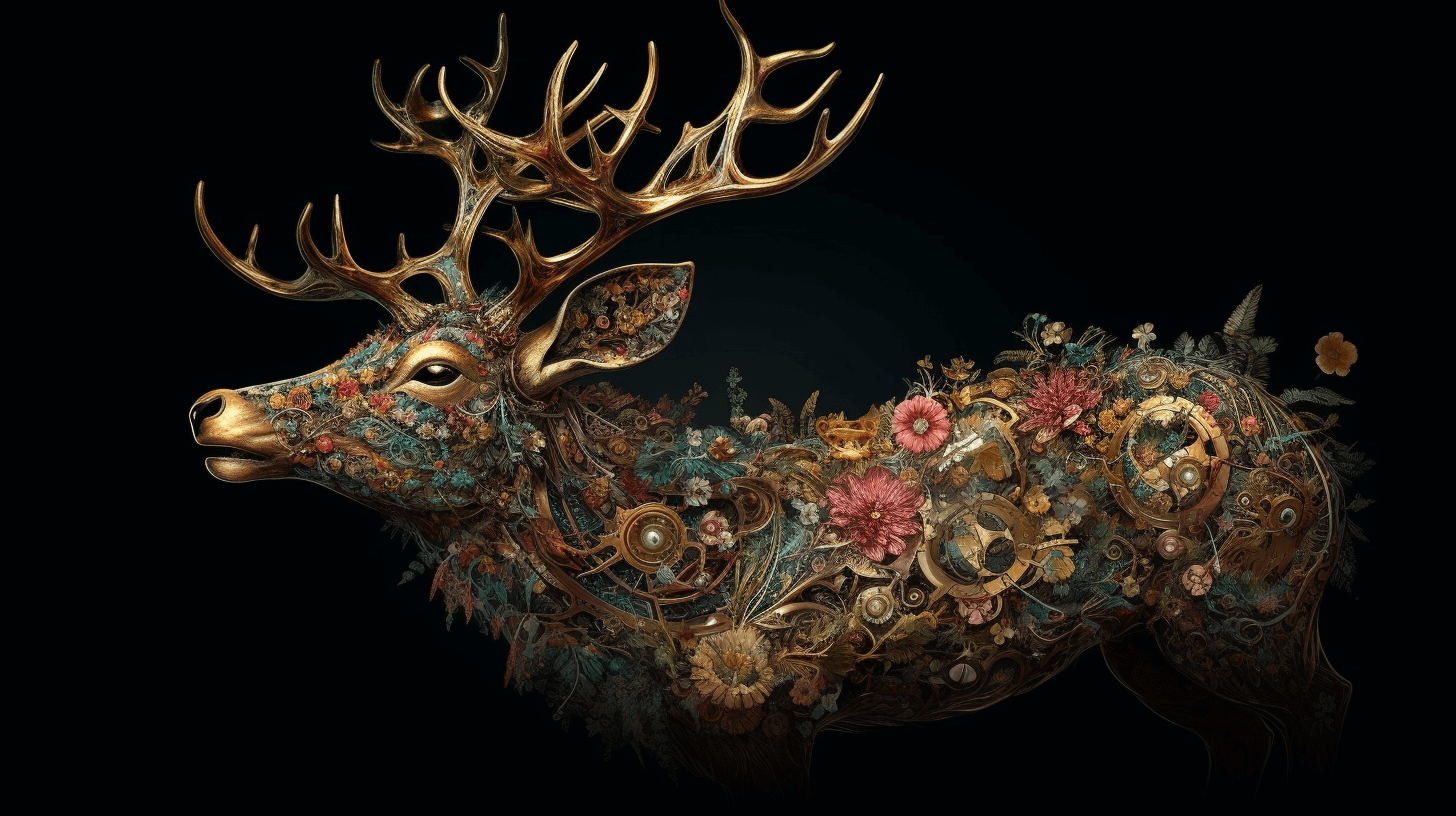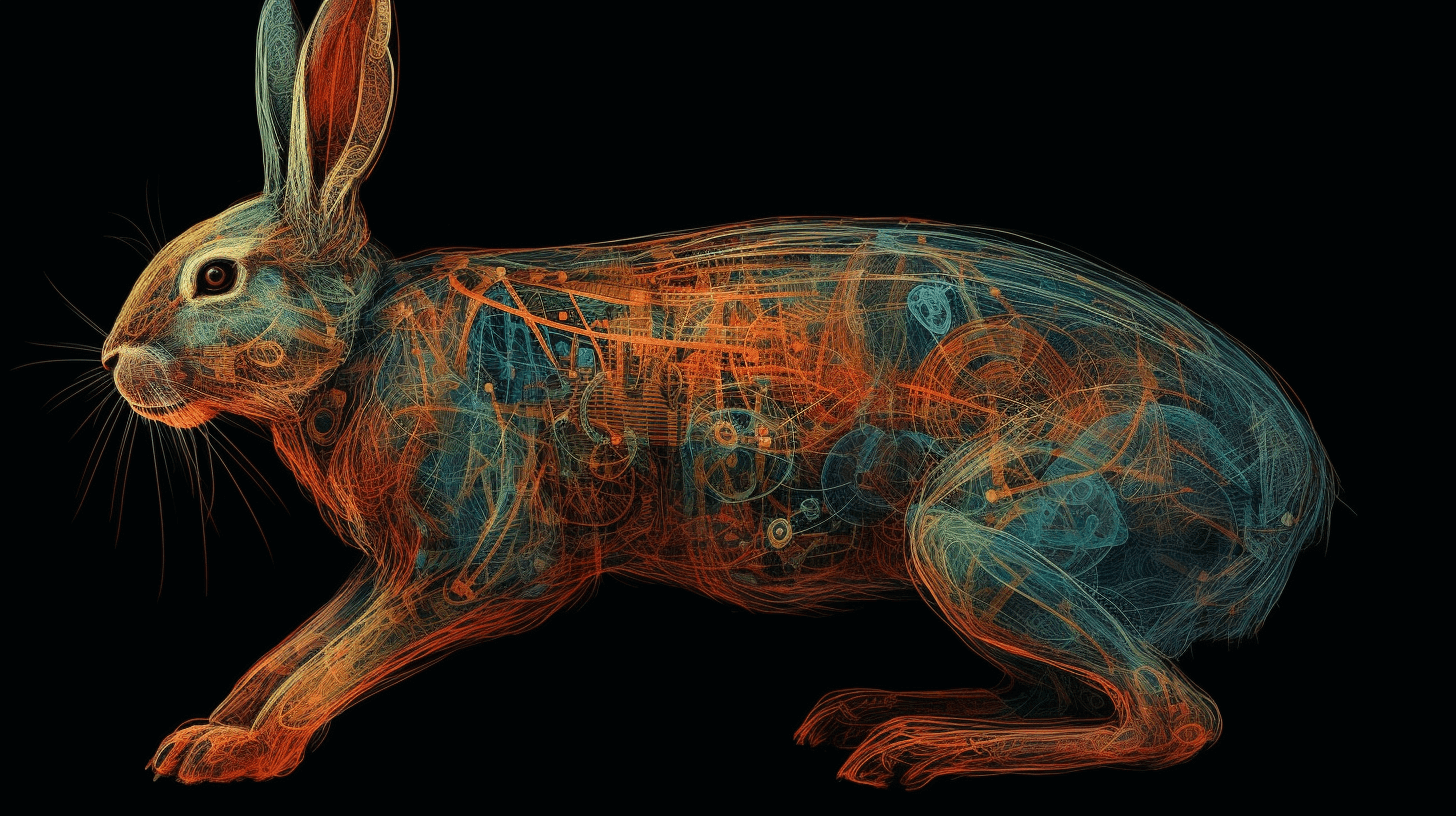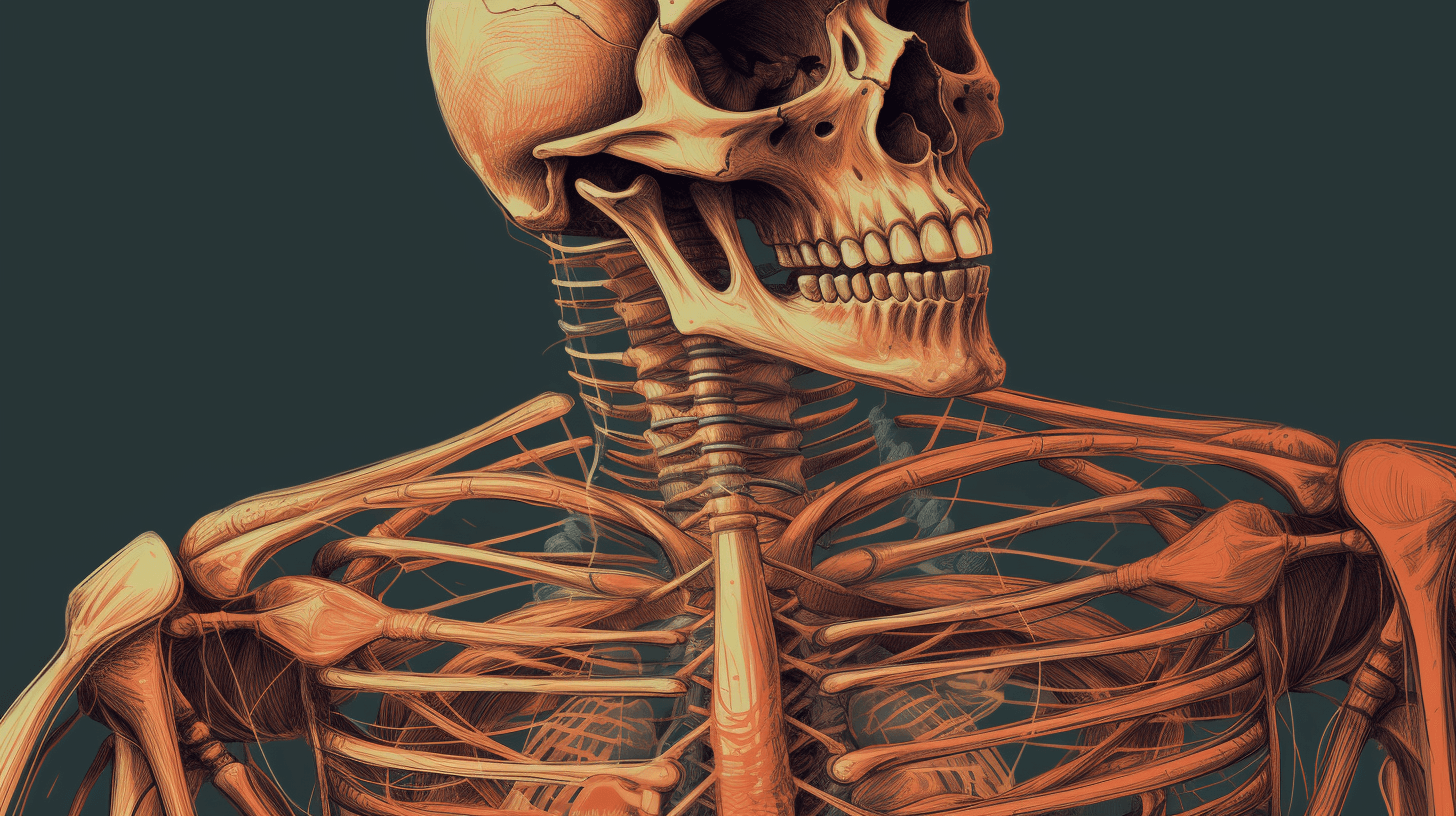
Deer, the majestic creatures roam our woodlands and, have long captivated human imagination. Their graceful, striking antlers, mysterious behavior make them a fascinating subject of. But beyond their enchant allure lies a deeper significance understanding the intricate anatomy of. By unraveling the of their physiology, we gain valuable insights into their strategies, mating rituals, even genetic inheritance. In article, we embark on journey to explore the captivating of deer anatomy, shedding on their physical attributes, organs, reproductive mysteries, more.
Table of Contents:
The Exterior Examining the Physical Attributes of Deer
Size and Weight
De come in a captivating array of sizes, with variations that intrigue and amaze. From the petite Pudu, barely 14 inches tall at the, to the majestic Moose, towering at over 6 feet, the diversity in deer sizes is astounding. But what factors influence these variations? The of food, environmental conditions, and even genetics play crucial roles in determining deer weight. Surprisingly, research has shown that size alone does not necessarily equate to fitness. In some cases, deer may actually have better survival rates due to their agility and ability to navigate dense vegetation.
Antlers: Crowns of Majesty
One cannot help but be in awe of the awe-inspiring antlers adorn the heads of male deer. But there is more to these majestic crowns than meets the eye Antler development is a fascinating process influenced by hormones, genetics, and environmental factors. Contrary to popular belief, antlers are not permanent fixtures rather regrow each year, reaching their peak during the breeding season. Beyond their aesthetic appeal, antlers serve a vital function in battles for dominance and attracting mates. The incredible diversity of antler shapes, palmate to spike and multi-pointed configurations, adds to the allure of these remarkable structures.
Coats and Camouflage
The coats of deer are not for aesthetic appeal but serve crucial purposes throughout the year. Thick, dense fur provides insulation during harsh winters, protecting deer from the biting cold. However, these coats undergo remarkable adaptations as the seasons change. The phenomenon of molting allows deer to shed their coats, revealing a sleeker summer ensemble. Furthermore, the art of camouflage is vital for survival in the wild. Deer possess various mechanisms to blend into their surroundings, from variations in coat coloration to disruptive color patterns that confuse potential predators.
Eyes and Ears: Nature’s Perfect Sensors
The senses of sight and hearing are finely attuned in deer, making them highly perceptive creatures in their natural habitat. Their eyes possess exceptional visual acuity, allowing them to detect even the slightest movements in their surroundings. Color perception is also crucial, aiding in the identification of food sources, potential threats, and even communicating with other deer. However, it is the extraordinary field of view that truly sets them apart. With eyes located on the sides of their heads, deer possess panoramic vision, enabling them to monitor their surroundings for any signs of danger. In addition to their keen eyesight, deer have a remarkable sense of hearing, capable of detecting ultrasonic frequencies and even the faintest rustle in the undergrowth.
Noses and Scent Glands: The Power of Smell
While humans may rely predominantly on sight and hearing, deer possess an invaluable sense of smell that is nothing short of extraordinary. noses are equipped with intricate structures, such as turbinate bones and specialized olfactory, enabling them to discern an immense range of scents. This keen sense of aids in foraging for food, detecting potential predators, and even communicating with other through scent marking. The unique features of deer noses, such as the vomeronal organ, further enhance their ability to decipher a wealth of olfactory information, them to navigate their environment with unparalleled precision.
The Vessel Within: Investig Deer Internal Organs and Systems
Skeletal Structure: Endurance and Adaptation
Beneath the majestic exterior lies a robust skeletal structure designed for endurance and. The study of deer bones reveals fascinating insights into their evolutionary journey. Deer skeletons uniquely adapted for agility and speed, with elongated leg bones, lightweight vertebra, and flexible joints. These adaptations allow deer to navigate various terrains and evade effortlessly. Furthermore, unconventional skeletal features, such as the elongated metapod, contribute to their remarkable running capabilities.
Cardiovascular System: Pumps andways
To sustain their active lifestyles and agile movements, deer rely on a highly efficient system. At the heart of this system is, well, the heart itself. deer’s heart plays a vital role in pumping oxygenated blood to every corner of body. This efficient blood circulation is facilitated by specialized blood vessels and robust heart muscles Interestingly, deer blood possesses unique attributes, such as high hemoglobin levels and increased blood cell counts, enabling them to thrive in oxygen-deprived environments.
Power in Motion
Deer’s ability to leap effortlessly, sprint astonishing speed, and gracefully navigate challenging terrains is owed to their powerful muscular system Their muscles are meticulously adapted for maximum strength, speed, and agility. The examination deer muscles reveals incredible muscle fiber composition and organization, allowing for explosive bursts of energy These muscles not only aid in predation and defense but also in various reproductive displays and territorial rituals.
Respiratory System: Breathing Life
Behind every powerful movement an efficient respiratory system that enables deer to continuously replenish their oxygen supply. The anatomy of the deer’s respiratory system is finely tuned to ensure optimal oxygen exchange. With adaptations such as large lung capacity and thin-walled air sacs, deer can their elevated activity levels without succumbing to fatigue. The relationship between respiration and is a critical aspect of deer physiology that contributes to their endurance during mating seasons andasive maneuvers when threatened.
Digestive System: Nourishing the Beast
The of food through a deer’s body is a fascinating one, involving numerous specialized digestive. Their digestive system is characterized by the presence of a multi-chambered stomach including a rumen, where food undergoes extensive microbial fermentation. This intricate system deer to extract maximum nutrition from their plant-based diet, enabling growth, development, survival in challenging environments. The assimilation of nutrients is a remarkable feat achieved throughiotic relationships with gut bacteria, highlighting the intricate coevolution of deer and their sources.
Reproductive Mysteries: Demystifying Deer’s Repro System
Mating Behavior and Rituals
The mating behavior of deer is captivating spectacle, resulting in intricate courtship displays and fierce competitions. Understanding deer’s seasons and the intricacies of their reproductive rituals offers valuable insights into their reproductive strategies. The timing of mating seasons is often influenced by environmental cues and varies among different deer species. Intricate courtship displays, such as vocalizations, scent marking, and physical battles, play vital roles in attracting mates and establishing dominance.
Male Repductive System: Secrets of Procreation
The male reproductive system of deer is a realm of procreation and power. Examining the reproductive organs of male deer reveals complexity of their mating strategies. The production of testosterone plays a crucial role in ant growth, dominance contests, and mating success. The examination of these organs provides insights the internal mechanisms that fuel the spectacular displays we witness during the rutting season.
Female Reproductive System: Nurturing New Life
The anatomy of the female’s reproductive system is intricately designed to nurture and sustain new life. From the of their reproductive organs to the intricacies of the estrous cycle and fawning season, the female deer’s reproductive system is a wonder in itself. The maternal care bonding between mother and fawn play a crucial role in shaping the survival of the next generation of deer.
Genetics and Hereditary Traits in Deer
The study of in deer reveals a world of hereditary traits, coloration patterns, and even genetic diseases. Understanding DNA and genetic inheritance sheds light on the fascinating variability in color and coat patterns seen across deer populations. It also highlights the challenges faced by deer when it comes to genetic diseases and the conservation efforts aimed at preserving these majestic creatures### Fawn Development and Growing Up
From birth to independence, the journey of fawn is a remarkable tale of growth and survival. Witnessing the birth ofawns and their early life experiences unveils the unique challenges faced by these vulnerable creatures. Each developmental stage shapes their ability to navigate the world, acquire survival skills, and eventually as independent individuals.
Summary and FAQs
Summary of Deer Anatomy and PhysiologyIn summary, the anatomy and physiology of deer are intricate and remarkable, providing insights their survival strategies, reproductive behavior, and genetic inheritance. From their physical attributes, such as size, antlers, and coats, to their internal organs and systems, embody a natural wonder that continues to captivate and mystify us.
Frequently Questions
How long do antlers take to grow?
Antler is an annual process that typically begins in spring and reaches its peak development by late or early fall. The duration can vary depending on the species, genetics, and factors.
Do deer have any natural predators?
While deer do not many natural predators, they face threats from predators such as wolves, coyotes, mountain lions. Additionally, human activities, such as hunting, can significantly impact deer.
How does molting occur in deer?
Molting occurs in deer a natural shedding process of their winter coats. The shedding is stimulated by changing daylight and temperature patterns, allowing deer to adapt to seasonal variations.
What are the causes of genetic diseases in deer?
Genetic diseases in deer can result from various, including inbreeding, genetic mutations, and environmental stressors. These conditions significant challenges to deer populations and require conservation efforts to mitigate their impact.
long does a fawn stay with its mother?
Fawns typically stay with mothers for about 6 to 12 months. During this time, they learn survival skills, such as foraging and evading predators, before eventually separating to their independence.
In conclusion, exploring the intricate physiology of deer unlocks a world of and allows us to appreciate the remarkable adaptations that have allowed these creatures to thrive in diverse range of environments. From their external attributes to the internal systems that sustain them the natural wonder of deer continues to intrigue and inspire.





